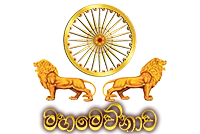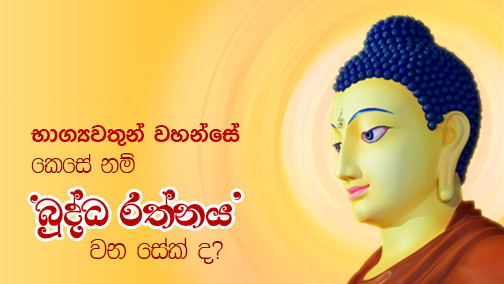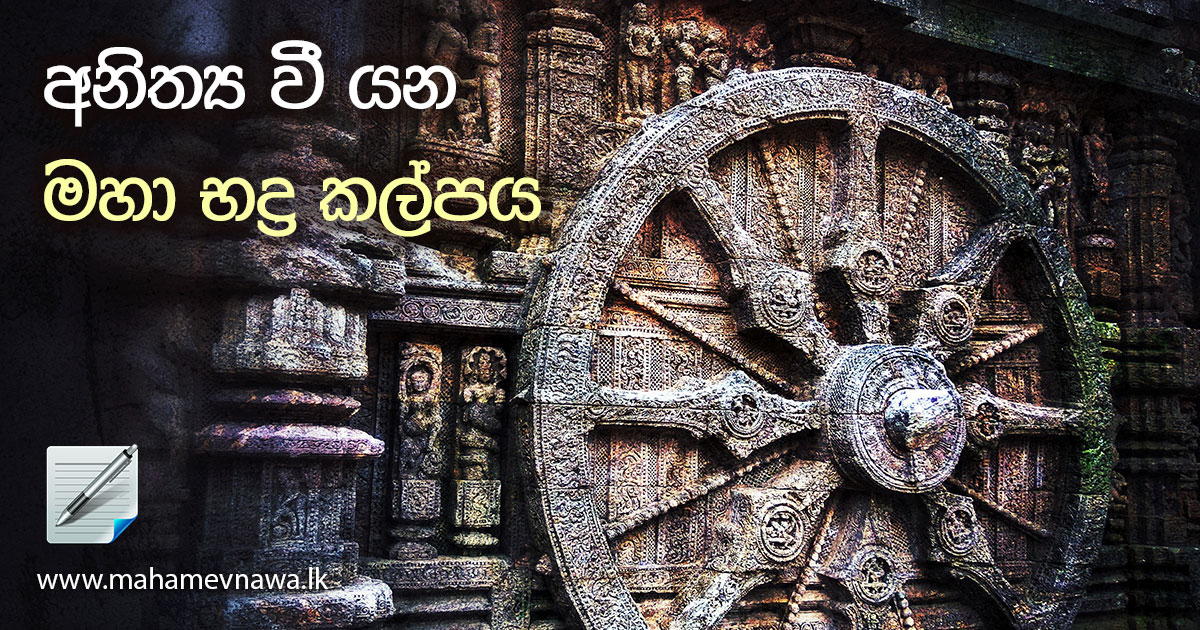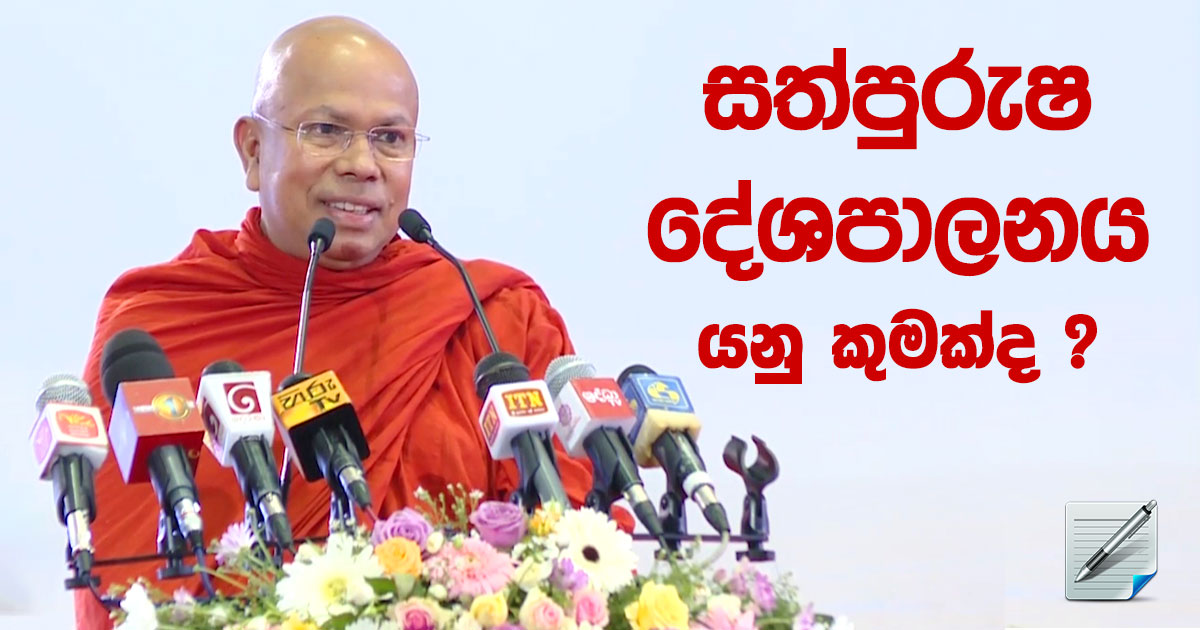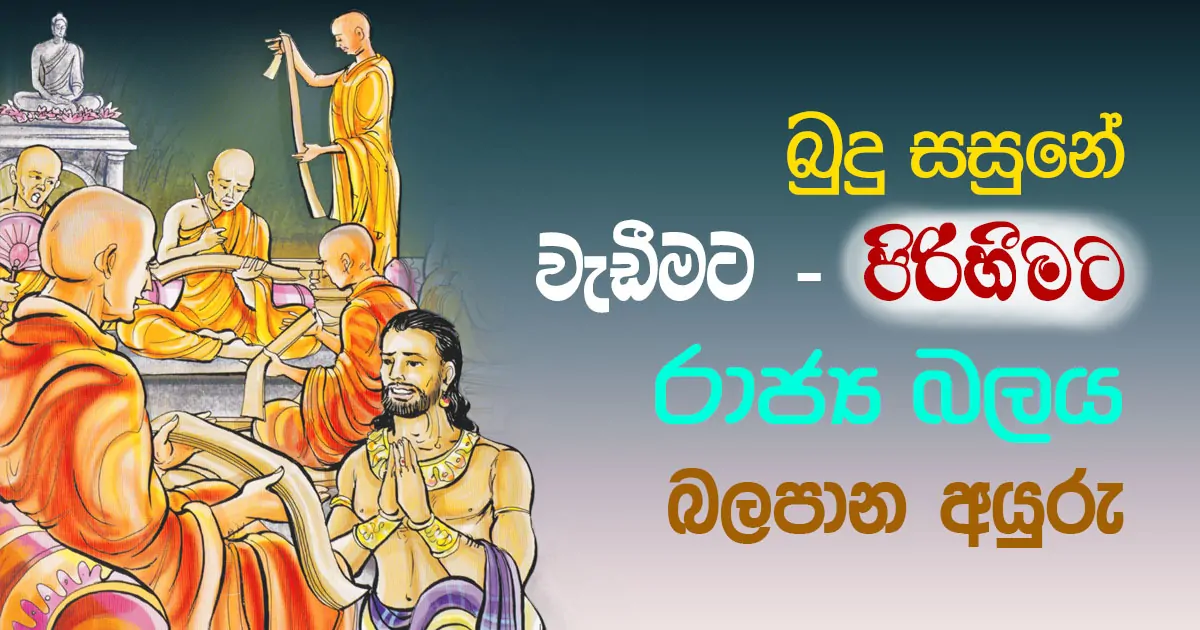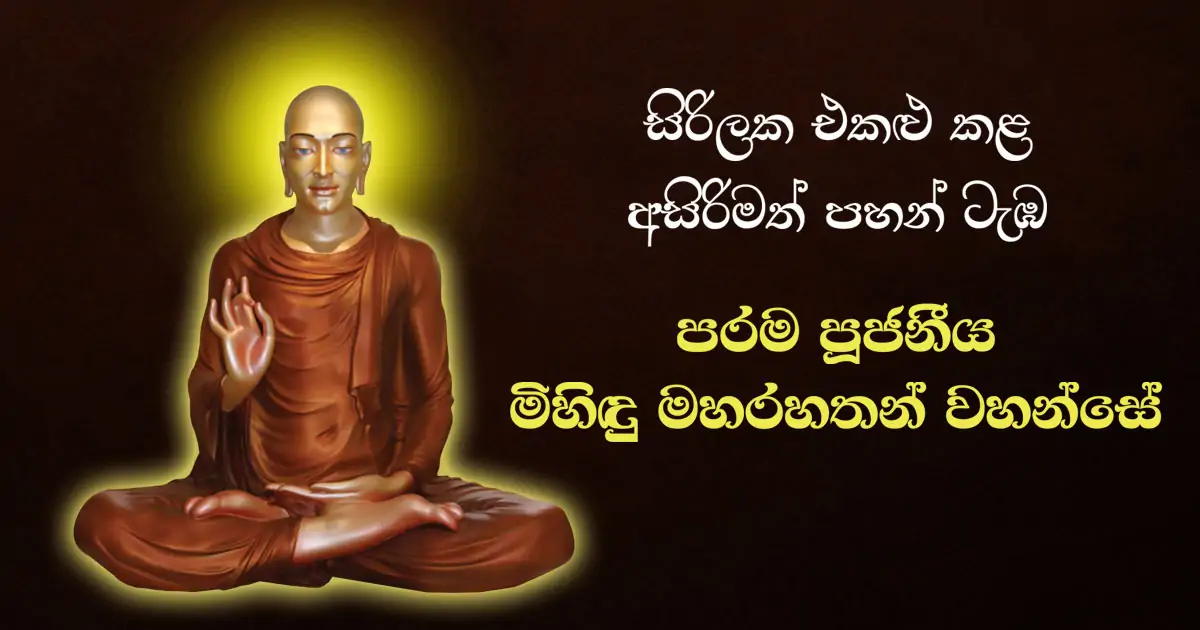There are six qualities in the teachings (the Dhamma) of the Supreme Buddha. The first quality is known as the ‘Swakkhātha’; Akkhātha means presenting and Su-akkhātha means well-presented or preached. So, what exactly does it mean? That is, the Dhamma preached by the Supreme Buddha is of immense use. Its beginning, middle, and end are friendly (of helping to free from suffering). It consists of clear meanings, clear words, and of clear description on the direct path that leads a person to realize the life and Nibbāna. This is why the Thathāgatha’s (another name given to the Buddha) wonderful Dhamma is Swakkhātha. You will only be able to see how true it is when you read the Buddha’s discourses and contemplate on them.
The Supreme Buddha’s Dhamma also consists of the quality known as Sanditthika. It means that the results of the Dhamma can be seen in this very own life. If the Dhamma doesn’t have this quality, none will be able to attain any of the path-and-fruition. It is because the Dhamma is Sanditthika, the people who attained path-and-fruition were found in countries where the Buddha’s teachings were spread. See the following preaching of the Supreme Buddha about this Sanditthika quality of the Dhamma.
“Dear Prince, let there be a night and day. If there is a Bhikkhu who has the association with a world leading Thathāgatha Buddha and is with five items (Pancha Padhāneeya: five factors for exertion) that lead one to exert on realizing path-and-fruition, that Bhikkhu will be advised in an evening. He will reach a special attainment by the next morning. When he gets an advice in the morning, he will reach a special attainment in the evening.”
– Bōdhirājakumāra Sutta (M. N. 2)
The next quality of the Dhamma, Sanditthika (to be realized in this life), is being hindered in the present society such that even talking about this quality has become something that is dishonorable. It shows how deep the Buddha’s dispensation has been corrupted today. In fact, one should at least have a faith about the Sanditthika quality of the Dhamma. The Supreme Buddha preached in the Sathipatthāna Sutta that a Bhikkhu would become Arahath or Anāgāmii within 7 days if he practices the path in the way the Buddha advised. (Arahath: the state of attainment of the Nibbāna; Anāgāmii: the 3rd fruition, which is one step below to the Nibbāna) What the Supreme Buddha preached in the Bōdhirājakumāra Sutta was that one who gets His advices in the morning will attain the path-and-fruition in the evening of the same day.
In order to be that successful, the Bhikkhu must have five talents, as the Buddha showed in the same discourse. The Bhikkhu must have faith about the Supreme Buddha’s enlightenment. He shall be healthy. He shall be free of fraudulent and illusive nature and a person who would disclose his true nature in front of noble human beings of high moral qualities. He must have a great effort governed by realization to eradicate defilements and to cultivate merits. He must also have a sharp mindfulness, which helps developing the Vidarshanā Paññā (wisdom of contemplating the true nature of things). It is in fact a disgrace to say that there are no wise people with such qualities/talents in the world today. There can be such people at least to a certain level. If the Supreme Buddha’s teachings were not be heard by such people, they will also get corrupted. This is what the Supreme Buddha preached,
“Santhi Bhikkhawe appa rajakkha jāthikā. Assavanhathō Dhammassa pariyāhanthi. Bhavissanthi Dhammassa aññāthārō.”
“Dear Bhikkhus, there are beings of less defilements. If they did not get a chance to listen to the Four Noble Truths, they will get corrupted. If they get the chance to listen to the Dhamma, they will realize it.”
Therefore, if a disciple has a genuine respect to the Buddha’s teachings, what he must do is showing the Dhamma by highlighting its qualitative value to others. Isn’t it? Therefore, the Bōdhirājakumāra Sutta is indeed enough for you to understand what the Sanditthika quality of the Dhamma means.
The Supreme Buddha’s teachings consist of the quality of Akālika (cannot be limited to a time period). If someone is pleased about that Dhamma, a wish to practice it will be formed in that person. He will then go looking for friends in Dhamma (Kallyānamitta), and he will hear the Dhamma from them. Then, that person will make an effort to practice the Dhamma. He will abstain from misconduct, sins, and five evil deeds. He will become virtuous, cultivate merits, and do many meritorious deeds such as donation, observing/protecting virtue, and meditation. Isn’t this the Akālika quality/nature of the Dhamma? Also, a meritorious person can form a pleasure arose from the concentration with happiness occurred from being passionless by abstaining from sensual pleasure and sinful acts. A meritorious person can also see through the cause-and-effect nature of things by the wisdom of Vidarshanā.
If one disgraces, insults, and condemns the Dhamma, which has such qualities of Sandditthika and Akālika, with an intention of lowering its qualities, it is inevitable for them to accrue many sins. It will also result for them to get births in low-level worlds. Therefore, we must understand that it is a very powerful sinful act to debase the Dhamma of the Supreme Buddha.
The teachings of the Buddha have the quality of Eehipassika, which means ‘come and see’. If someone is to think that ‘we lack merits and don’t have merits for us to realize this Dhamma, we need to continue in the Samsara more and be born in a countless number of more lives, and then we will able to realize the Dhamma’, such thoughts do not belong to the Buddha’s Dhamma. This is Makkhalii Gōsāla’s view. Still many people state this view at present without any shame or fear. But the teachings of the Supreme Buddha are brighter than the Sun and the Moon. The Buddha preached that the Dhamma will be brightened only when it is accessible or open to others and not when it is concealed. There is no secret advising or secret practicing of those advices in the Dhamma. Such secrecy only belongs to Upanishad Dharma, which is the Vēdāntha or the last part of the Veda. The parts that Brahmins keep to themselves without teaching to their students belong to the Upanishad. But the teachings of the Buddha were a radiant Dhamma that was disclosed to all divine beings and humans openly without any secrets. If that is not the case, can the Dhamma be delivered in convocation, as it was done few times over the past? If the Dhamma was a secret, then it will not be able to be delivered publically. Therefore, if there is a place where sermons and advices are secretly delivered and such advices are followed secretly, then that needs to be suspected. The teachings of the Buddha are truthful, and it can be fearlessly shown to anyone and by inviting them to ‘come and see’. It can be proven by you by studying the discourses of the Buddha.
The Supreme Buddha’s Dhamma is of Opanaika quality. That is, the mass of virtue, concentration, and wisdom described in the Dhamma need to be brought into oneself. What exists in the Dhamma is something that needs to be practiced. One can practice the Dhamma because of its Opanaika quality.
The Dhamma of the Supreme Buddha also consists of the quality known as Pachchaththan Vēdithabbō Viññūhii, which means the Dhamma has to be realized according to one’s talent. That is, people of various meritorious qualities come to the Dhamma, and various types of talents are arisen in them when practicing the Dhamma. Because of this reason, some of them attain the 3rd state of the path-and-fruition, Anāgāmii, and some the Nibbāna. This implies that the Dhamma is realized by each person separately. This quality of the Dhamma, the way of realizing it by each person according to their separate wisdom, is known as the Pachchaththan Vēdithabbō Viññūhii.
If one gets a chance to realize the Dhamma comprised of such qualities in their own language and in easy to understand words in this era, how fortunate it is! Therefore, it is indeed a great advantage to see the discourses of the Buddha being common in this human world. The ability of understanding the meanings of the discourses is a light to a human life. The Supreme Buddha preached as “dear Brahmin, for a human being, I institute this Dhamma as his wealth” in the Eesukārii Sutta. Thus, other than from the teachings of the Supreme Buddha, from what else a human being can get a noble and transcendental wealth?
By
Most Ven. Kiribathgoda Gnanananda Thero
